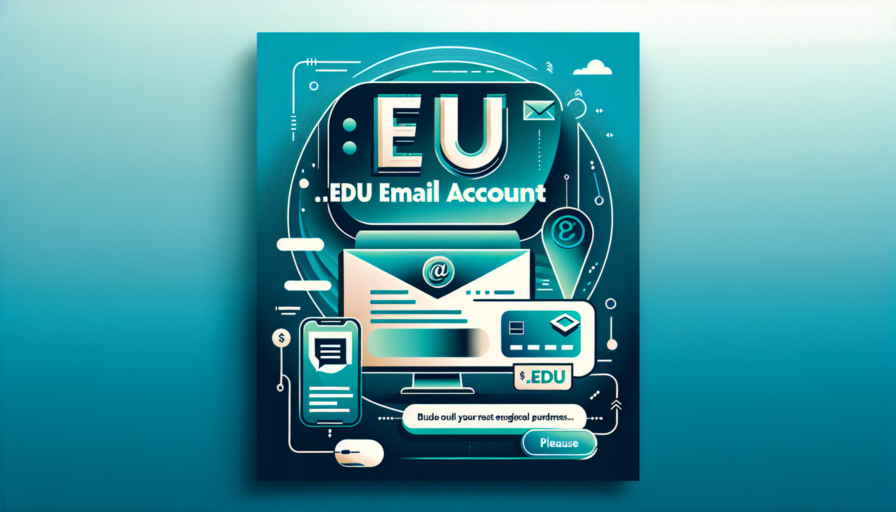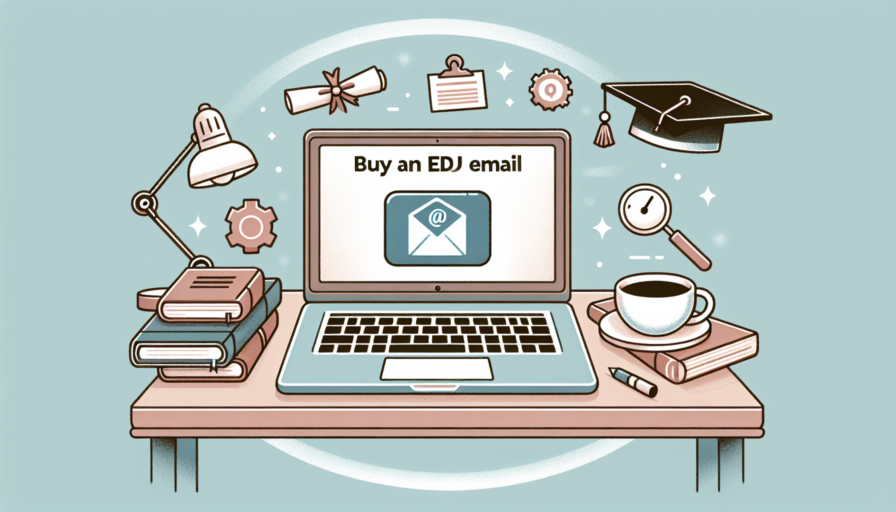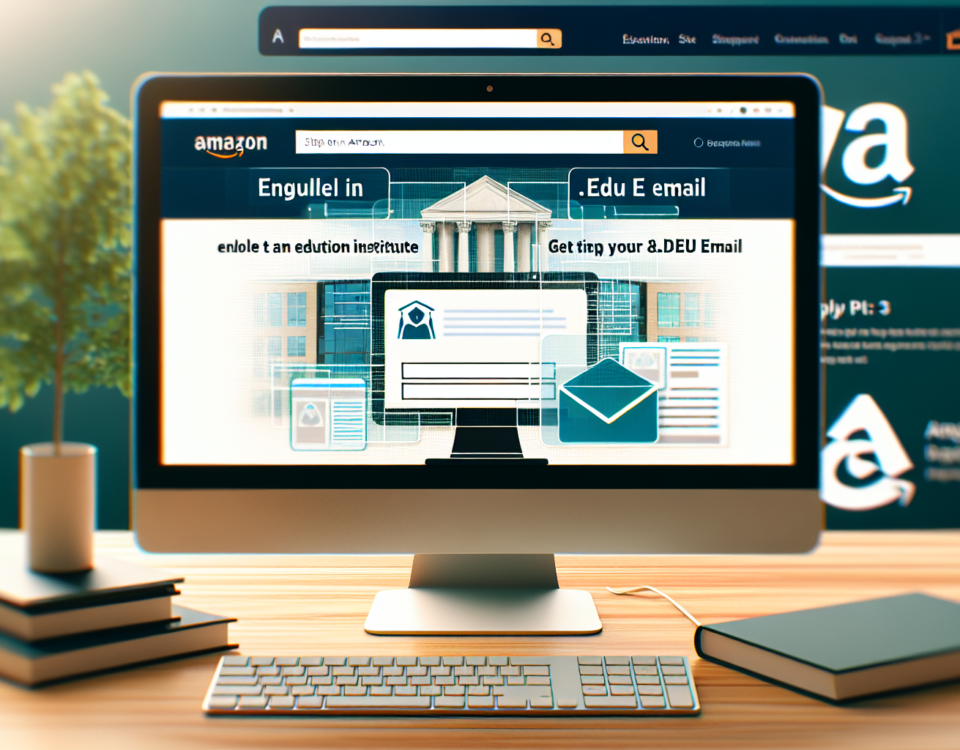Ultimate Guide to Accessing Edu Mail on Outlook: Tips and Tricks for Students
February 15, 2024
How to Get an EDU Email: A Step-by-Step Guide for Students and Educators
February 15, 2024What Is an EDU Email Account and Why Is It Important?
An EDU email account is an email address that is provided exclusively to the students, faculty, and sometimes alumni of educational institutions, primarily those accredited by a governing education body. The majority of EDU emails end with the domain “.edu” which signifies their academic origin. This email is not only a cornerstone for internal communication among students and educators but also acts as a verification of one’s academic involvement, which often comes with an array of benefits and resources accessible only to the education sector.
Having an EDU email account is crucial for a plethora of reasons. Firstly, it serves as an official channel for communication within universities and colleges. Professors utilize it to disseminate course information, update students on critical academic dates, or share educational resources. It is also used by the institutions’ administration for sending important announcements and for the management of digital profiles used in library systems, campus networks, and other educational platforms.
Another aspect of its importance lies in the exclusive privileges it offers. Students with an EDU email account can qualify for significant discounts on software, subscriptions, and various services, ranging from Microsoft Office to Adobe Creative Cloud, and even reduced rates on technology products. These benefits are not only supportive of academic success but also furnish students with tools that might otherwise be inaccessible due to cost constraints. Additionally, an EDU email often opens the door to educational grants, scholarships, and fellowship opportunities that require a valid academic email as part of the application process.
Furthermore, an EDU email is a mark of credibility and authenticity. In a digital world teeming with information, an EDU email adds a layer of trustworthiness to communication and digital transactions. Students are able to collaborate safely knowing that their interactions are recognized by educational standards and prevent potential risks associated with unverified sources. Moreover, for alumni, this email can often remain active, enhancing their professional image by maintaining a link with a reputable academic institution.
Step-by-Step Instructions to Access Your EDU Email Login
Having an EDU email account unlocks a plethora of benefits for students and faculty members, ranging from discounted software to subscription services. However, the first step to harnessing these advantages is successfully logging into your EDU email account. For students and staff members new to using an educational institution’s email system, this can sometimes be a daunting task. The following are detailed instructions to ensure you can access your EDU email with ease every time.
Locate the Official Email Login Page
First and foremost, it’s crucial to ensure you are visiting the official EDU email login page. This typically requires navigating to your institution’s main webpage and looking for the designated email access link. Most educational institutions provide a clear and straightforward path to the email login page either in the header, the footer, or under a specific “Current Students” or “Faculty” portal. It is important to use the official website to prevent any security risks associated with unauthorized phishing sites.
Prepare Your Login Credentials
Before attempting to log in, have your provided username and password ready. For most educational institutions, your username will be your student or faculty ID, which is often followed by @yourinstitution.edu. If you’re accessing your EDU email for the first time, you may have been given a temporary password. In such cases, be prepared to go through an initial setup process that may include creating a new secure password and setting up security questions for account recovery purposes.
Follow the Two-factor Authentication Process
In today’s digital environment, security is paramount, and many educational institutions have implemented two-factor authentication (2FA) to enhance the protection of student and staff accounts. This means you might need to have your mobile device on hand to receive a one-time code via SMS or use an authenticator app. If 2FA is part of your institution’s login procedure, make sure to follow the prompts after entering your username and password. Failure to complete this step may prevent you from accessing your EDU email.
By closely following these steps, you can ensure a seamless process each time you log in to your EDU email. Keep your credentials secure and update your password regularly to maintain the privacy and security of your educational correspondence. Remember, your EDU email is a critical communication tool throughout your academic journey, so being able to access it without issues is essential.
Common Login Problems and How to Troubleshoot Them
Login issues can be a significant hurdle in accessing important services and can range from the forgettable, like a misplaced password, to the technically challenging, such as server-side errors. Let’s walk through some of the most common login problems and explore strategies for troubleshooting them effectively. Starting with the basics, one of the most prevalent issues users face is entering incorrect credentials. This usually happens when we have multiple passwords and mix them up. But before you hit the ‘reset password’ button, ensure the caps lock is turned off and double-check your typing, as passwords are case-sensitive.
Another frequent culprit behind login difficulties is outdated or incompatible web browsers. If you find yourself unable to log in, try updating your browser to the latest version or switch to a different browser to see if that resolves the issue. Additionally, clearing your browser’s cache and cookies can eliminate any stored data that may be causing conflicts with the login process. Use the browser’s settings to find this option, but remember, doing this can log you out of other sites.
Connectivity problems can also masquerade as login issues. If the login page takes a long time to load or doesn’t load at all, check your internet connection. You can do this by attempting to visit a different website or running a network diagnostics test on your device. If you’re connected but still can’t access the login page, it might be that the service is experiencing downtime. In such cases, visiting the service’s status page or social media channels can provide updates and estimated times for resolution.
For those who encounter ‘account locked’ messages, this security measure is usually triggered by too many failed login attempts. If you find yourself locked out, take a breath and wait for the designated cool-down period to expire, often detailed on the notification. Afterward, you can attempt to log in again or use the provided means to unlock your account, such as verifying your identity through email or SMS. Remember, continuous failed attempts may extend the lockout period, so it’s crucial to proceed with care.
Maximizing Security: Protecting Your EDU Email Account
Understanding the Value of Your EDU Email
An EDU email account is not just a doorway to your academic resources, but it’s also a potential target for cyber threats given its access to sensitive data and institutional systems. Therefore, maximizing security around these accounts is paramount for students, faculty, and staff members. By doing so, one can safeguard personal information, academic work, and avoid unauthorized access that could lead to compromising academic integrity or even financial loss.
Implementing Essential Security Measures
First and foremost, it is essential to create a strong, unique password for your EDU email account, which should be updated regularly to thwart potential hacking attempts. Passwords should be a complex mix of letters, numbers, and special characters. Additionally, enabling two-factor authentication (2FA) provides an extra layer of security, ensuring that you’re the only one who can access your account, even if someone else discovers your password.
Phishing Scams and How to Avoid Them
Be vigilant about phishing attempts. Cybercriminals often masquerade as credible sources, such as university IT departments, to lure you into providing your credentials. Always verify the authenticity of any emails requesting sensitive information and never click on suspicious links or attachments. Training and awareness are your best defenses here – being able to recognize the signs of a phishing email can prevent many security breaches before they occur.
Regular Reviews and Updates
Lastly, conducting regular security check-ups on your EDU email account is crucial. Reviewing login activity and app permissions can help you spot any unusual actions that could indicate a breach. Make it a habit to check privacy settings and ensure your recovery details, such as phone number and alternate email, are up-to-date to assist with swift account recovery in case you’re ever locked out due to suspicious activities.
The Future of Educational Email: What’s Next for EDU Login?
The landscape of educational technology is shifting, and with it, the role and features of EDU emails are evolving. The traditional EDU login, a hallmark of academic verification, has long been used to grant students and educators access to software discounts, scholarly databases, and institution-specific communications. As we look ahead, the integration of AI-driven authentication methods may redefine what it means to have an .edu email address. Future iterations of EDU login procedures could well prioritize heightened security and personalized user experiences.
Enhanced Security Through Biometric Verification
In the coming years, EDU email systems are poised to become more secure as biometric verification techniques are adopted. Imagine logging into your academic account not with a password, but with a fingerprint or facial recognition scan. This advancement is not only about convenience but also about protecting users against phishing attacks and unauthorized access. As institutions place a higher premium on cybersecurity, the EDU login process will shift to include these multifactor authentication measures, ensuring that educational resources remain exclusive to their intended audience.
Customizable Learning Environments and Communication
The personalization of learning experiences through EDU email accounts is another front where significant changes are anticipated. Upcoming EDU login platforms may offer customizable dashboards that automatically filter and prioritize content and resources based on the user’s study habits, course enrollments, and academic interests. Educators could benefit from such sophistication as well by receiving alerts and insights on student engagement and performance. These data-driven interfaces will likely encourage a more interactive and engaged relationship between students, faculty, and educational content.
Interoperability Across Educational Platforms
Interoperability is a key term for the future of EDU logins. As educational institutions utilize a myriad of platforms for different purposes – from grading systems to online course materials – the need for a seamless integration through a single educational email login is critical. EDU email systems will have to evolve to act as a universal key that not only validates identity but also bridges various services and tools without the hassle of multiple logins. This unified approach will streamline the academic workflow, making the educational experience more cohesive and integrated for students and educators alike.







